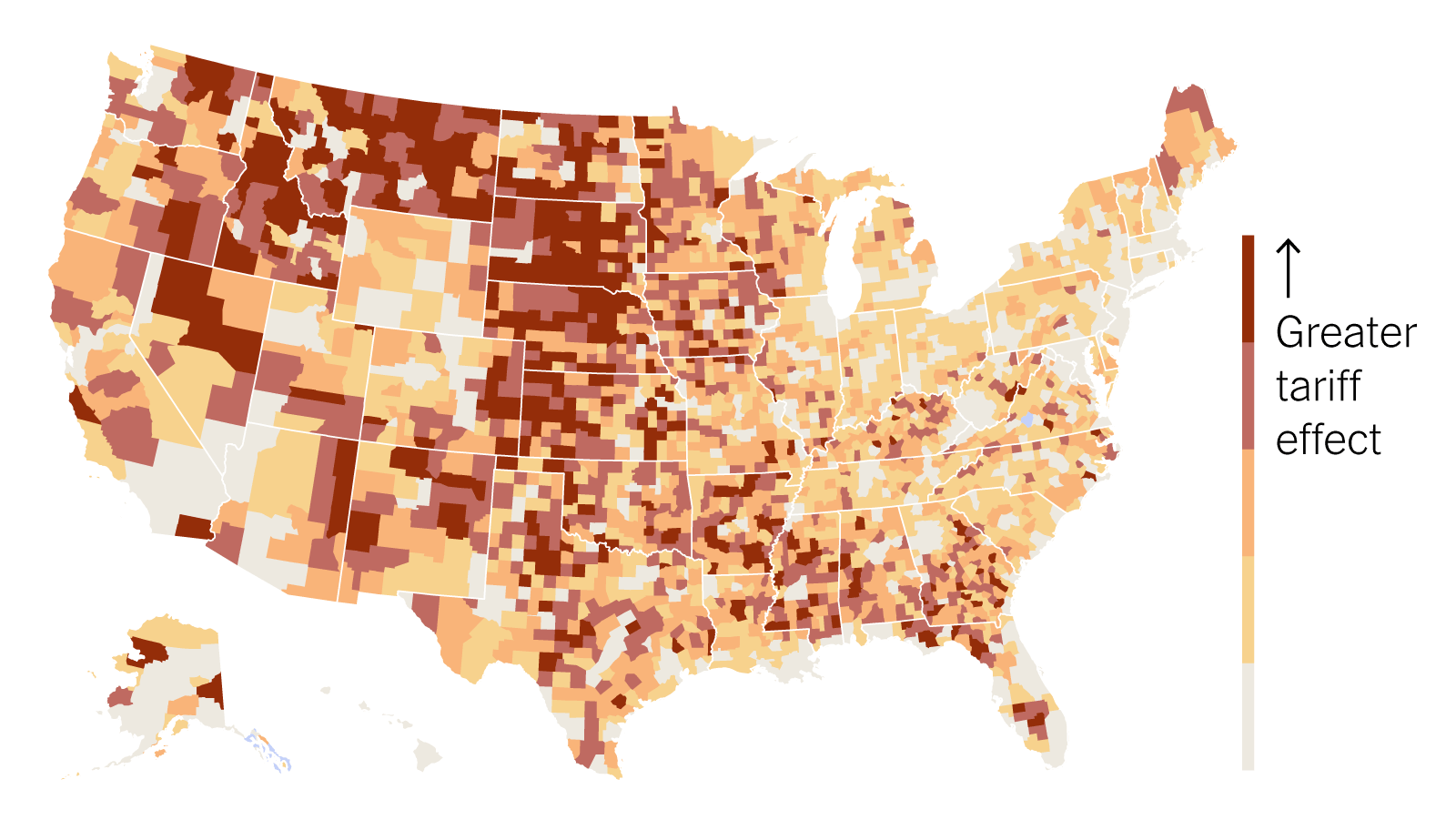Analyzing The Effects Of U.S.-China Tariff Rollbacks On The American Economy

Table of Contents
Impact on Consumer Prices
Reduced Costs for Consumers
- Lower prices for imported goods: Reduced tariffs directly translate to lower prices for consumers on a wide range of imported goods. This includes everyday items such as electronics, clothing, furniture, and many consumer staples.
- Increased purchasing power: Lower prices increase consumer purchasing power, potentially stimulating economic growth.
- Specific examples: For instance, a reduction in tariffs on certain electronic components could lead to cheaper smartphones and laptops. Similarly, lower tariffs on textiles could result in lower clothing prices.
Quantifying the potential savings requires analyzing specific tariff reductions and their impact on the prices of individual goods. Reports from organizations like the Peterson Institute for International Economics have attempted to model these effects, showing potential savings for consumers ranging from a few percentage points to more substantial amounts depending on the goods involved. These savings contribute to inflation relief, impacting the consumer price index.
Potential for Inflationary Pressures
- Supply chain disruptions: Even with tariff rollbacks, ongoing supply chain disruptions and logistical bottlenecks could still push prices up.
- Increased domestic demand: Lower prices on imported goods might lead to increased consumer demand, potentially exceeding supply and driving up prices.
- Reduced competition: If domestic producers lack the efficiency to compete with lower-priced imports, even after tariff reductions, prices might not fall as drastically as expected, or could even increase.
The potential for inflationary pressures remains a concern. While tariff reductions can lower import costs, other factors, such as supply chain bottlenecks and labor shortages, can offset these benefits and create inflationary pressures. The impact on the consumer price index will depend on the complex interplay of these factors.
Effects on American Businesses
Increased Competitiveness for U.S. Companies
- Enhanced global market share: Reduced tariffs make American products more competitive in the global market, particularly in sectors where previously high tariffs had created a significant disadvantage.
- Export growth: Companies can expect increased export opportunities as their products become more attractive to international buyers.
- Examples: Industries like agriculture, manufacturing, and technology could experience increased export growth due to enhanced competitiveness.
Several U.S. companies have already reported positive impacts due to tariff rollbacks, illustrating the benefits of enhanced U.S. competitiveness and increased opportunities for export growth in the realm of global trade.
Challenges for Businesses Dependent on Imports
- Increased input costs: Businesses relying on imported components or raw materials face challenges if those imports remain subject to tariffs or experience price increases due to other factors.
- Supply chain vulnerability: Dependence on imports can expose businesses to supply chain disruptions and increase vulnerability to global events.
- Adaptation strategies: Companies need to consider shifting sourcing, diversifying their supply chains, or adjusting pricing strategies to maintain profitability.
Businesses that are heavily reliant on imports face significant challenges. The need for supply chain resilience is more critical than ever, and many firms are exploring options to reduce their import dependence and adapt to the changing dynamics of global trade.
Influence on the U.S. Trade Deficit
Impact on the Trade Balance
- Increased imports: Reduced tariffs could lead to an increase in imports from China, potentially widening the U.S. trade deficit.
- Complex interplay of factors: The U.S. trade deficit is influenced by many factors beyond tariffs, including exchange rates, economic growth, and consumer demand.
- Predicting the impact: The exact impact on the trade balance is difficult to predict and depends on how consumer behavior and businesses adjust to the new tariff landscape.
Analyzing the impact on the U.S. trade deficit requires careful consideration of various economic indicators and factors beyond tariffs. Understanding bilateral trade relationships and the complexities of the global economy is crucial in assessing the long-term implications.
Long-Term Trade Relations
- Improved relations?: Tariff rollbacks could signal a move towards improved U.S.-China trade relations, fostering greater cooperation and stability.
- Potential for future agreements: Reduced tensions might create opportunities for new trade agreements and greater economic integration.
- Geopolitical stability: Stable trade relations are vital for geopolitical stability, and tariff reductions can contribute to a more predictable and less confrontational international environment.
The impact on long-term trade relations extends beyond the immediate economic effects. The overall impact on geopolitical relations and the potential for future trade agreements will be significant factors in shaping the global economic landscape.
Conclusion
The effects of U.S.-China tariff rollbacks on the American economy are multifaceted and complex. While reduced tariffs offer the potential for lower consumer prices and increased competitiveness for some U.S. businesses, they also present challenges for those reliant on imports and may have complex effects on the trade deficit and broader international relations. Further research and monitoring are necessary to fully understand the long-term impacts. To stay informed on the evolving effects of U.S.-China tariff rollbacks and their impact on various sectors of the economy, continue to follow credible economic news sources and analyses. Understanding the ongoing impact of U.S.-China tariff rollbacks is essential for navigating the changing economic landscape.

Featured Posts
-
 Salman Khans R2 Crore Box Office Bomb A Career Defining Failure
May 13, 2025
Salman Khans R2 Crore Box Office Bomb A Career Defining Failure
May 13, 2025 -
 Changes To The Nhl Draft Lottery A Live Studio Drawing
May 13, 2025
Changes To The Nhl Draft Lottery A Live Studio Drawing
May 13, 2025 -
 Ncaa Tournament Kellys Deja Blue Story Continues Against Duke
May 13, 2025
Ncaa Tournament Kellys Deja Blue Story Continues Against Duke
May 13, 2025 -
 Guia Para Ver El Partido Atalanta Vs Lazio En Vivo Serie A 2025
May 13, 2025
Guia Para Ver El Partido Atalanta Vs Lazio En Vivo Serie A 2025
May 13, 2025 -
 Bbcs Chris Packham On The Importance Of Slug Conservation The Hug A Slug Campaign Explained
May 13, 2025
Bbcs Chris Packham On The Importance Of Slug Conservation The Hug A Slug Campaign Explained
May 13, 2025
